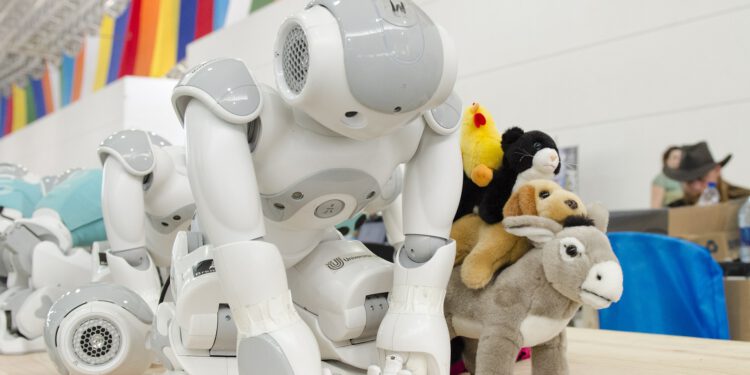Artificial intelligence makes its way into the workplace and it is necessary to establish the framework of relationships that must prevail between the human worker and the machine.
Incorporating robots into the work environment will be one of the most important challenges that companies around the world will have to face in the medium term. The fear of many employees that programmed machines can perform the activity that they currently carry out is raising important debates as we have commented on several occasions in our blog or even in one of our monographs. It is true that robots have already been an important part of factories and assembly companies for years, but the current novelty is that new robots have advanced cognitive abilities that would allow them to undertake activities that until now were exclusive to people.
Although there is a debate about the capabilities of intelligent systems, what everyone recognizes is that computers are far superior to us when it comes to performing operations, they are capable of making millions of them in just a second. Moreover, they have a very high precision, which makes them unbeatable for performing certain activities; it would not make any sense to put a mathematician, no matter how good he was, to compete in making multiplications with a computer. However, for those activities in which it is necessary to understand the environment very well and in which creativity is fundamental, people have a greater capacity. Two very different types of qualities, leading most experts to consider that the greatest efficiency in performing most complex activities is achieved through collaboration between people and robots.
Achieving this coexistence between both worlds in work environments will be one of the fundamental objectives of the coming decades for companies. In a first approach, technologists believe that robots (or bots if it is only intelligent software) will be able to take care of many of the activities, especially of a repetitive nature, that people currently perform. While people would be in charge of controlling the robots so that they were able to “take the controls” at the moment that a problem occurs that is out of the usual.
As we commented in the post of the coexistence between automatic systems and people in the field of driving vehiclesthis situation is not so simple. On the one hand, the differences in capacities are so great that coexistence can be difficult and even dangerous. For example, an autonomous driving system uses precision margins that make it difficult for people to live together, as is already the case in the aviation sector. On the other hand, as mentioned in the post, there is a major problem with information, especially on those occasions when we do not know if the system is working properly. Because users often lack the data to understand what’s going on.
For example, suppose a system that automatically invests in the stock market. Let us also assume that there are certain conditions for which it was not programmed and which make investments inadequate. In such a situation, it would be very difficult for the operator in charge of monitoring the system to act for two reasons. The first and most important is because it would cost the person to assess if the system is working well, since he probably does not know all the details of how the bot works. The second is that even knowing that the system does not work correctly, it does not have the proper knowledge of the relationships and implications, and therefore is not able to make an accurate diagnosis, let alone propose a solution in a short period of time. In investment in derivatives, this has often produced cascade effects: a series of robots programmed to sell at a certain level make reaching that level mean a trigger of sell orders, and the drop is much stronger than it should by the automatic reaction.
All this should lead us to consider the need to design intelligent systems from the beginning under the premise that they will have to live with people in the work environment, which will mean a series of aspects to consider:
- Processes must be designed taking into account the different capabilities of robots and people
- The fundamental decision principles of robots must be known to the user
- Monitoring entities and relationships handled by robots should be easy and intuitive for the user
We are still at the beginning of a new working era in which robots will be another companion, as other machines or animals have been in other eras. Although in principle, in an elementary division of tasks, robots would be in charge of the execution of activities and people of supervision, the reality is that you can not supervise what is not perfectly understood. This fact will be of great importance and will be the origin of numerous frictions in the work environment, perhaps we will soon see the specialist of human resources expert in solving conflicts between people and robots. This situation should be taken into account from the beginning of the design and in the future it may become mandatory for robots or bots to work in work environments that bear the seal: “Designed to work with people”.
This post was previously published in the blog La Cofa of Fundación Telefónica









